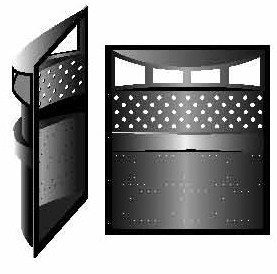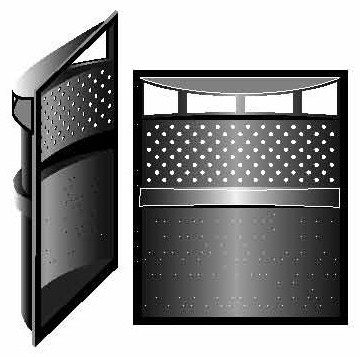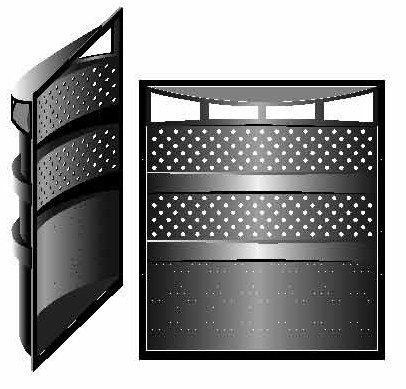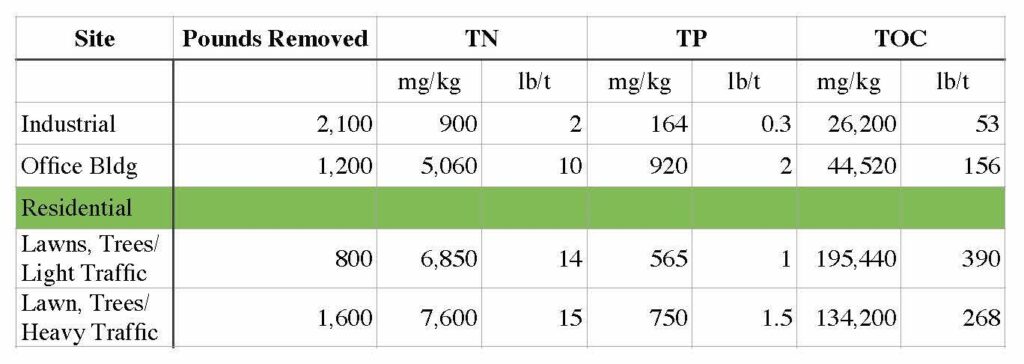Why Install a Trash Guard Insert
(Patent # 7276156)
Trash Guard®
Insert 23″

Trash Guard®
Insert 28″

Concrete Outlet Pipes Covered 18″ and less
Trash Guard®
Insert 34″

Concrete Outlet Pipes Covered 24″ and less
Trash Guard® stormwater devices have been installed at several monitored locations in North Carolina. All of the areas selected collect stormwater from moderately large commercial/industrial areas or residential areas with significant vegetative cover in the watershed. The Trash Guard device is intended to trap and screen solid materials generated during storm events. Once trapped, the solids assist in filtration of solids in the catch basin. Solids trapped by the device provide a tortuous path through which liquid must flow and sites where solid materials associated with the trapped solids remain in the catch-basin. Initially, no materials are trapped and the retention is low, as the volume of trapped solids increase, retention and filtration improve. Materials trapped in the basin include: sand, trash and a mix of leaf litter, small twigs and stems and grass. These materials contain organic matter, nutrients, petroleum products and regualated metals – all of which adversely impact water quality.
Samples of the water entering the Trash Guard device and exiting the device were collected and analyzed following significant storm events. The samples were assessed to determine concentrations of a suite of water quality parameters. The testing program is conducted under direction of A.R. Rubin, Professor Emeritus at North Carolina State University.
The effectiveness of Trash Guard inserts have been tested at locations throughout North Carolina. The devices have removed over 2000 pounds of stormwater solids at one facility and over 1000 pounds at other sites annually. Analysis of these retained solids show significant levels of nutrients and regulated pollutants retained by the device. These solids were previously discharged into adjacent surface waters adding pollutants to surface water bodies. In areas where surface waters are impaired and listed on state water quality reports, the installation and management of Trash Guard devices will result in significant removal of pollutants. The effectiveness of the Trash Guard was assessed by comparing water entering and exiting the test catch basins. Trash Guard devices removed measurable levels of both suspended and soluble pollutants from stormwater and concentrations of pollutants discharged were reduced. All sites were Post Construction sites stabilized for the intended site use.
The total weight of solids removed annually and nutrient and selected regulated metal levels removed (as concentration and equivalent pounds per ton) from selected Post Construction Sites are presented in Table A below.
Weights & Solids Table A

Testing is currently underway assessing the water quality entering and exiting a basin equipped with a Trash Guard device at several facilities. Selected water quality test results from the water quality monitoring are presented in Table B below as concentration in incoming or raw stormwater, the discharged stormwater from a mature Trash Guard, the percent removal. These are concentration values only. The nitrogen and phosphorus removed are soluable in the water while the TOC or total organic carbon and the TS or total solids contain both soluble and insoluble components.
Trash Guard captures all floatables larger than orifice openings such as Styrofoam, Plastic and Paper Products when major rain events create head drive force on exiting stormwater. Under normal rain events Trash Guard captures 100% of floatables such as Styrofoam, Plastic and Paper Products.
Influent & Effluent Concentrations – Table B




